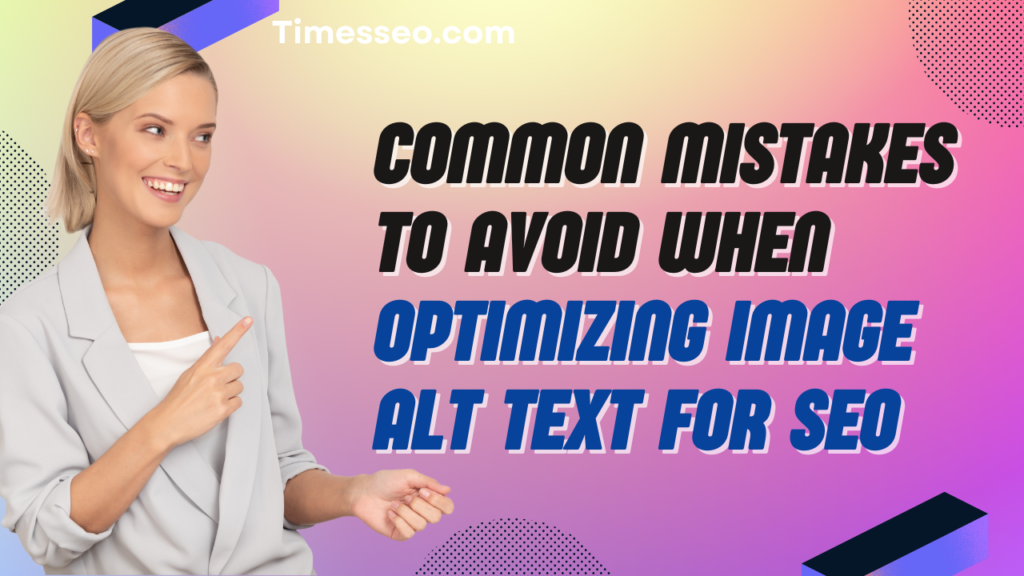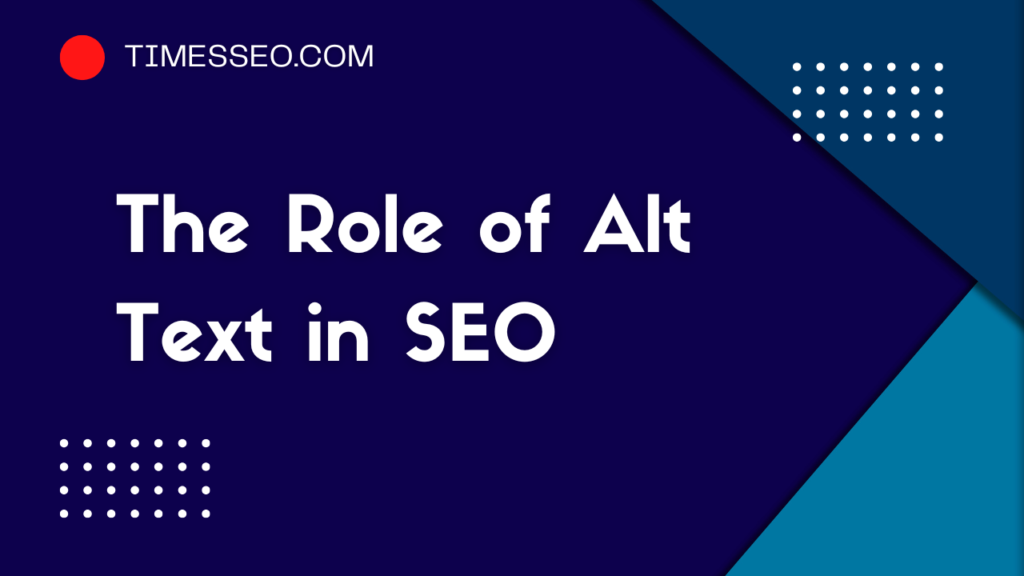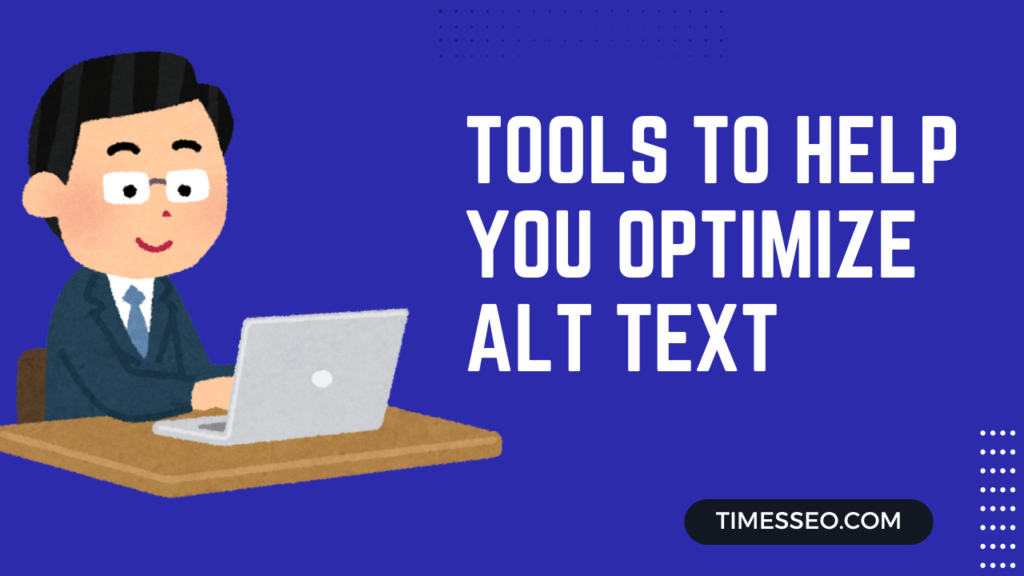
Common Mistakes to Avoid When Optimizing Image Alt Text for SEO
Discover the most common mistakes content creators and marketers make when optimizing image alt text for SEO. This guide helps you avoid these pitfalls while improving your site’s accessibility and search engine visibility. Learn best practices, see real examples, and boost both user experience and rankings.
Table of Contents
Introduction
Ever stumbled across a blank spot where an image should be, only to see weird text that doesn’t make sense? That’s what happens when alt text isn’t used properly. Alt text, or alternative text, is more than just a fallback for missing images—it’s crucial for SEO and accessibility.
In this article, we’re diving deep into the common mistakes people make when optimizing image alt text for SEO. Trust me—you’ll be surprised how often even pros mess this up.
The Role of Alt Text in SEO
The Role of Alt Text in SEO
Unlike humans, search engines are unable to “see” images. Alt text tells search engines what the image is about, helping them understand your content better—and rank it more accurately.
Alt Text and Google Image Search
Do you want Google Image results to include your photos? Well-written alt text makes it happen. It’s like giving Google glasses to “see” your image.
Common Alt Text Mistakes
1. Using Generic Descriptions
If your image alt text is something like “image1.jpg” or “pic123,” you’re missing out. These descriptions give no value to users or search engines.
Bad: alt=”photo”
Good: alt=”Golden retriever playing in the park”
2. Keyword Stuffing in Alt Text
You might think cramming keywords into your alt text will boost SEO. Spoiler alert: it won’t. Google can recognize spammy alt text and may penalize your site.
Good: alt=”Blue running shoes with white soles”
3. Ignoring Context of the Image
Alt text must reflect the purpose of the image in context of your content. If you have an image of a laptop in a blog post about “Work from Home Tips,” don’t just say alt=”laptop”.
Better: alt=”Laptop on a home office desk for remote work”
4. Skipping Alt Text Altogethe
No alt text? That’s a big red flag for SEO and accessibility. Always add it—even if it’s just for clarity.
5. Writing Too Long or Complex Descriptions
Keep it under 125 characters. That’s what most screen readers will read before cutting off.
Bad: alt=”An extremely high-definition, close-up photograph of a very rare blue-and-yellow macaw sitting on a perch in the middle of a tropical rainforest with other birds in the background”
Good: alt=”Blue-and-yellow macaw perched on a branch”
6. Repeating the Same Alt Text
If every image on your blog has alt=”SEO Tips”, search engines will get confused. Tailor your descriptions for each image.
7. Adding Alt Text to Decorative Images
Some images don’t need alt text—like background flourishes or icons. Use alt=”” for purely decorative visuals to avoid cluttering screen readers.
Best Practices for Writing Effective Alt Text
Use Descriptive, Relevant Keywords
Think about what someone might search to find that image. Describe it using those words—but naturally.
Keep It Short and Simple
Stick to what matters. Use plain language. Aim for one sentence.
Maintain Natural Language
Write how you speak. Avoid robotic phrasing like alt=”search engine optimization SEO graphic icon”.
Match Alt Text with Page Content
What is on the page should be supported by the alt text. If your content is about baking, don’t use unrelated descriptions like alt=”mountain view”.
Test with Accessibility Tools
Use tools like Google Lighthouse and WAVE to make sure your alt text is accessible and error-free.
Tools to Help You Write Better Alt Text
- Google Lighthouse – For accessibility audits
- WAVE Tool: Identify incorrect or missing alt text
- Yoast SEO Plugin – Offers suggestions in WordPress
Alt Text for Different Types of Images
Product Images
Highlight key features. alt=”Leather office chair with adjustable height”
Infographics
Summarize the graphic. alt=”Infographic showing 5 SEO tips”
Charts and Graphs
Describe the trend. alt=”Bar chart showing sales growth from Jan to Jun 2024″
Decorative Elements
Skip the alt text entirely or use alt=””
Real Examples of Good vs Bad Alt Text
Image Type | Bad Alt Text | Good Alt Text |
Dog Photo | alt=”dog” | alt=”Golden retriever with tennis ball” |
SEO Chart | alt=”chart” | alt=”Line graph showing SEO traffic growth” |
Button Icon | alt=”icon” | alt=”” (decorative) |
Tools to Help You Optimize Alt Text
SEO Plugins
Yoast SEO, RankMath, and other WordPress plugins highlight missing or poorly written alt attributes.
Accessibility Checkers
The browser extensions Axe and WAVE check your pages for alt text compliance and other accessibility problems.
AI-Powered Image Recognition Tools
Tools like Google Cloud Vision can help you understand what Google “sees” in your image.
How Alt Text Fits Into a Larger SEO Strategy
Alt text is only a single component. But when combined with optimized file names, responsive image sizing, and fast-loading pages, it contributes significantly to your overall SEO performance. Plus, as visual search becomes more prominent, having well-described images can drive a steady stream of traffic over time.
Conclusion
Alt text has a big impact even though it might seem like a small detail. Done right, it enhances your site’s SEO, improves accessibility, and helps your content stand out in search results. Avoid the common mistakes, follow best practices, and your images will not just look good—they’ll perform great too.
Frequently Asked Questions
Yes—except decorative images. For those, use alt=""
Keep it under 125 characters for best results with screen readers.
Avoid doing this. Customize each alt text to reflect what the image shows.
Absolutely. Well-written alt text increases visibility in image searches.
Use empty alt tags like alt="" so screen readers skip them
Table of Contents
Popular Posts
-
 Affordable Technical SEO Audit for Small Business: A Complete Guide26 Jun 2025 Blog
Affordable Technical SEO Audit for Small Business: A Complete Guide26 Jun 2025 Blog -
 How to Get an Affordable Technical SEO Audit for Small Business27 Jun 2025 Blog
How to Get an Affordable Technical SEO Audit for Small Business27 Jun 2025 Blog -
 The Ultimate Local SEO Audit Checklist for Startups28 Jun 2025 Blog
The Ultimate Local SEO Audit Checklist for Startups28 Jun 2025 Blog -
 Local SEO Audit Checklist for Startups: A Beginner’s Guide28 Jun 2025 Blog
Local SEO Audit Checklist for Startups: A Beginner’s Guide28 Jun 2025 Blog -
 Top On-Page SEO Audit Steps for Service Websites Every Business Should Know29 Jun 2025 Blog
Top On-Page SEO Audit Steps for Service Websites Every Business Should Know29 Jun 2025 Blog -
 Technical SEO for WordPress: The Ultimate Beginner’s Guide01 Jul 2025 Blog
Technical SEO for WordPress: The Ultimate Beginner’s Guide01 Jul 2025 Blog -
 The Impact of On-Page SEO Audit Steps for Service Websites on UX01 Jul 2025 Blog
The Impact of On-Page SEO Audit Steps for Service Websites on UX01 Jul 2025 Blog -
 Technical Mobile SEO Audit Tips for Developers02 Jul 2025 Blog
Technical Mobile SEO Audit Tips for Developers02 Jul 2025 Blog -
 Complete SEO Backlink Audit Guide for Better Google Rankings03 Jul 2025 Blog
Complete SEO Backlink Audit Guide for Better Google Rankings03 Jul 2025 Blog -
 Boost Your Rankings with Technical SEO for WordPress01 Jul 2025 Blog
Boost Your Rankings with Technical SEO for WordPress01 Jul 2025 Blog






